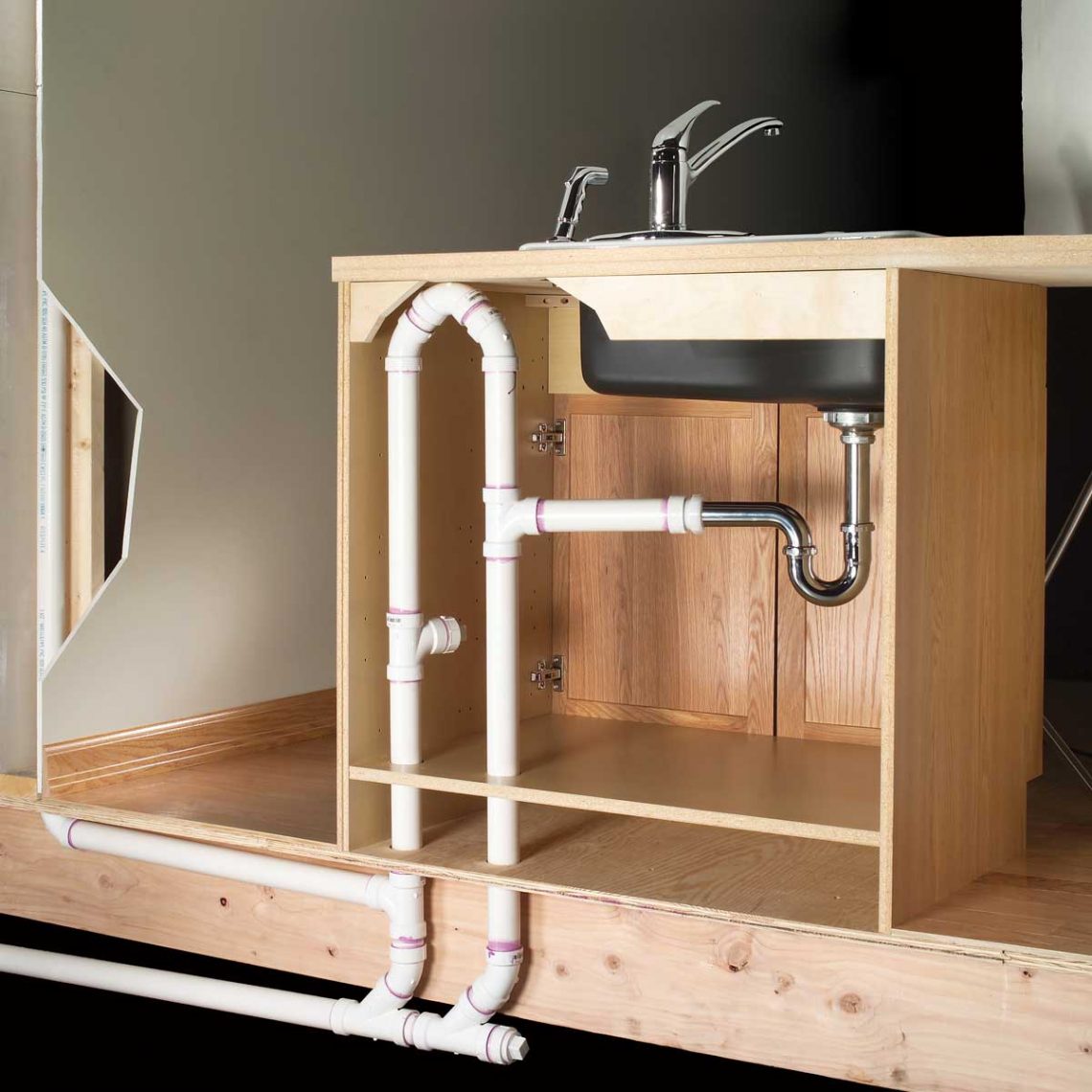Option 1: An island vent
Plumbing an island sink is challenging. It can’t be vented the same way as a regular kitchen sink. Here’s how it works.
Plumbing vents (a network of pipes that carry air and gas outdoors through a pipe exiting your roof) are essential to supply enough air to keep equal pressure in the plumbing system. They keep water and waste moving through the pipes at the right speed. A flow that’s too slow leaves behind debris that clogs pipes. If it’s too fast, suction siphons water from the P-trap (see under sink plumbing diagram below), allowing harmful sewer gas to enter your home. A regular kitchen sink, adjacent to a wall, has a vent hidden in the wall that connects to the drain. So it won’t plug up, the vent must rise 6 in. above the overflow level of the sink before the pipe goes horizontal. Obviously, a vent pipe in a kitchen island can’t do that.
As an alternative, most plumbers recommend a special type of vent (sink plumbing diagram below) that loops as high as it can go inside the cabinet before heading under the floor and over to the main vent in the wall. Always get approval from your local plumbing inspector before installing this type of vent. A second cleanout may be required in the vertical wall vent pipe.
An Island Vent
An island vent rises as high as possible under an island before running to a regular vertical vent. It keeps air in the drain system and prevents siphoning of the P-trap.
Tip: If you plan to attach a garbage disposer to an island sink, replace the sanitary tee and cleanout adapter with a flat-patterned cleanout tee. That makes it easier to snake the top of the loop if it gets plugged.
Note: An island vent sink plumbing diagram can be downloaded and printed from the Additional Information below.


An air admittance valve, approved for use in certain states, provides air for drainage but remains shut to sewer gases. And it eliminates the need to run a vent pipe under the floor.
Close-up of an air admittance valve
An air admittance valve equalizes air pressure in the drain system.
A second option—one that requires no outside venting, makes installation much easier, and is either loved or hated by plumbers—is called an air admittance valve (AAV).These are not the spring-operated cheater vents used in trailers; they’re gravity-operated valves that open when water flow creates negative pressure, allowing air to enter to equalize pressure. But before you opt for this choice, you need to understand the pros and cons, as well as contact your local plumbing inspector to determine if an AAV is allowed (many local plumbing codes in the United States currently accept AAVs).
If installed correctly, they can work in most single-family homes, as long as there’s one primary main vent that penetrates the roof to outside air. Drawbacks? Sometimes AAVs can’t keep up with the venting needs of high-volume (18 to 22 gpm) discharge washers and dishwashers. And AAVs have a tougher time relieving pressure in the drainage and vent system of five-story buildings and higher.
Additional Information/Sink Diagram An Island Vent
Read more: familyhandyman.com





